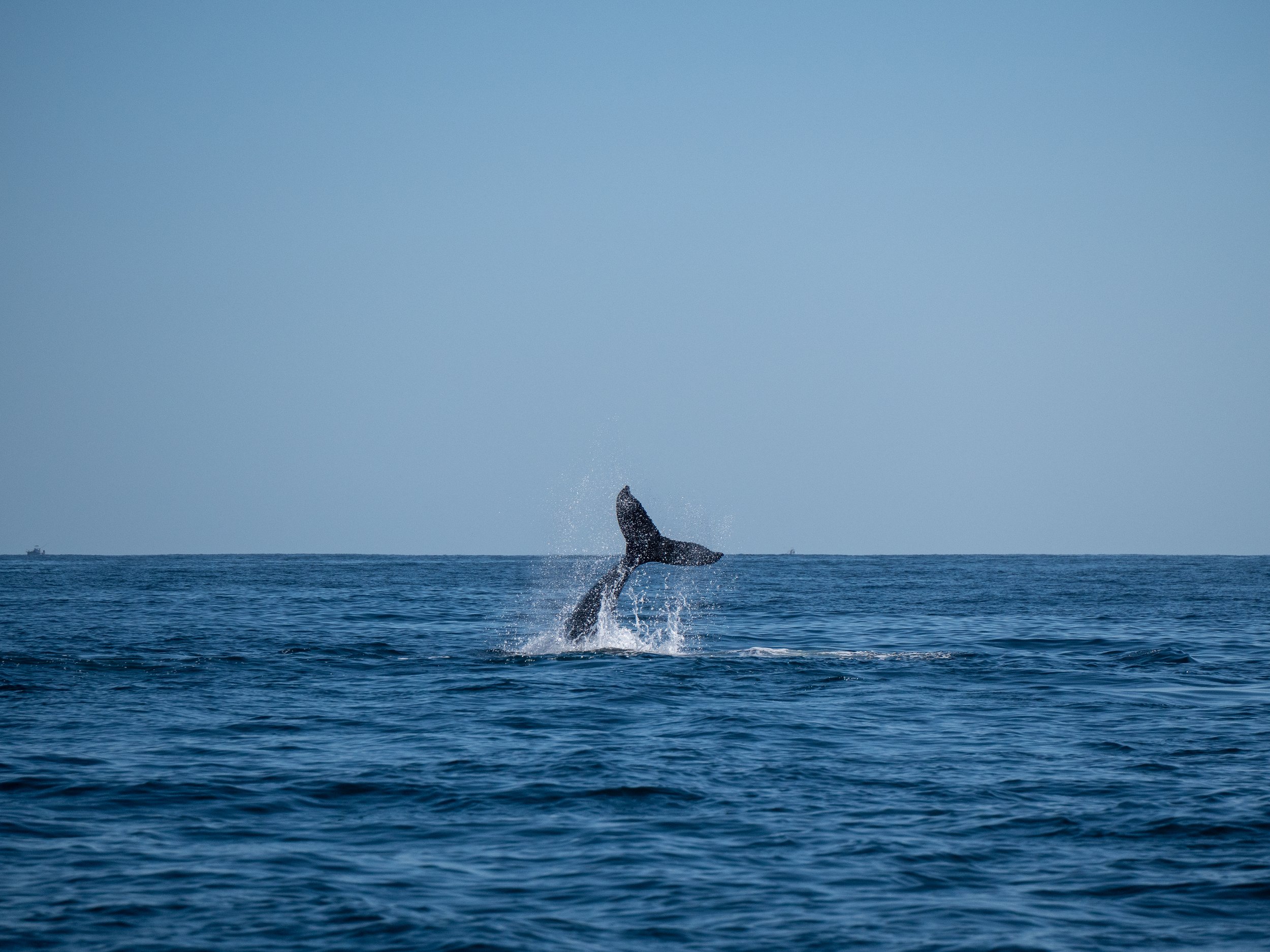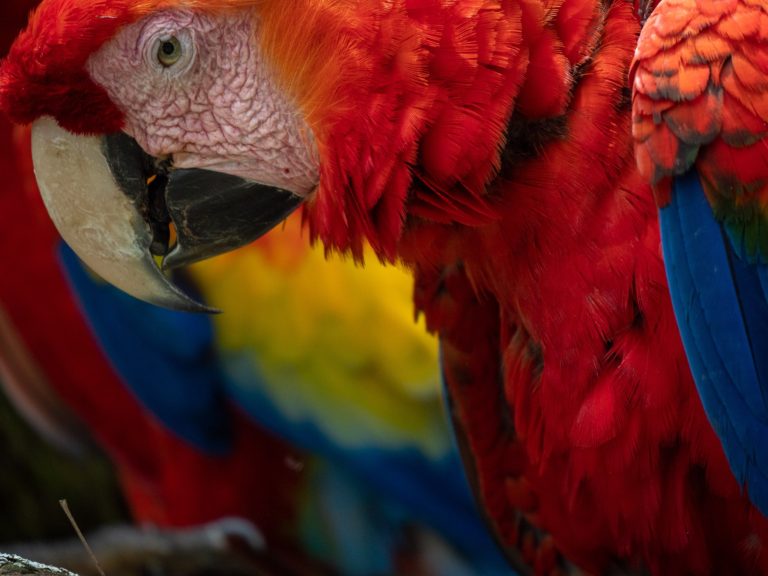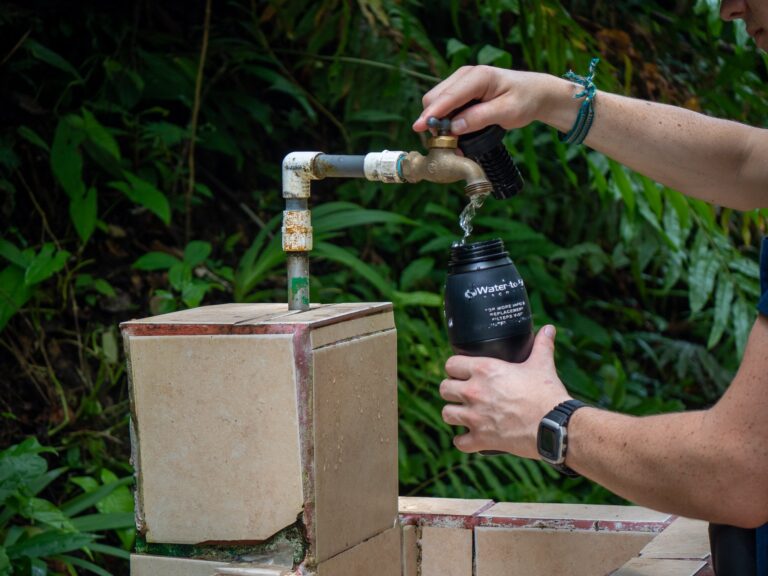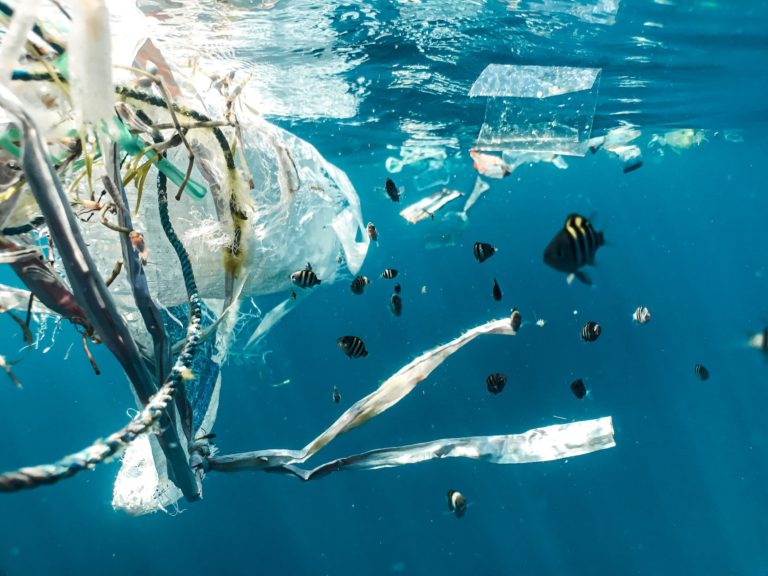Let’s Talk About Ethical Wildlife Tourism
A discussion on wildlife tourism: what it is, the signs of an unethical encounter and how you can choose ethical wildlife experiences when you travel in 2024.
(Updated 2024)
This post may contain affiliate links, which means we might earn a small commission on anything purchased through these links at no extra cost to you. Learn more on our Disclaimer page.
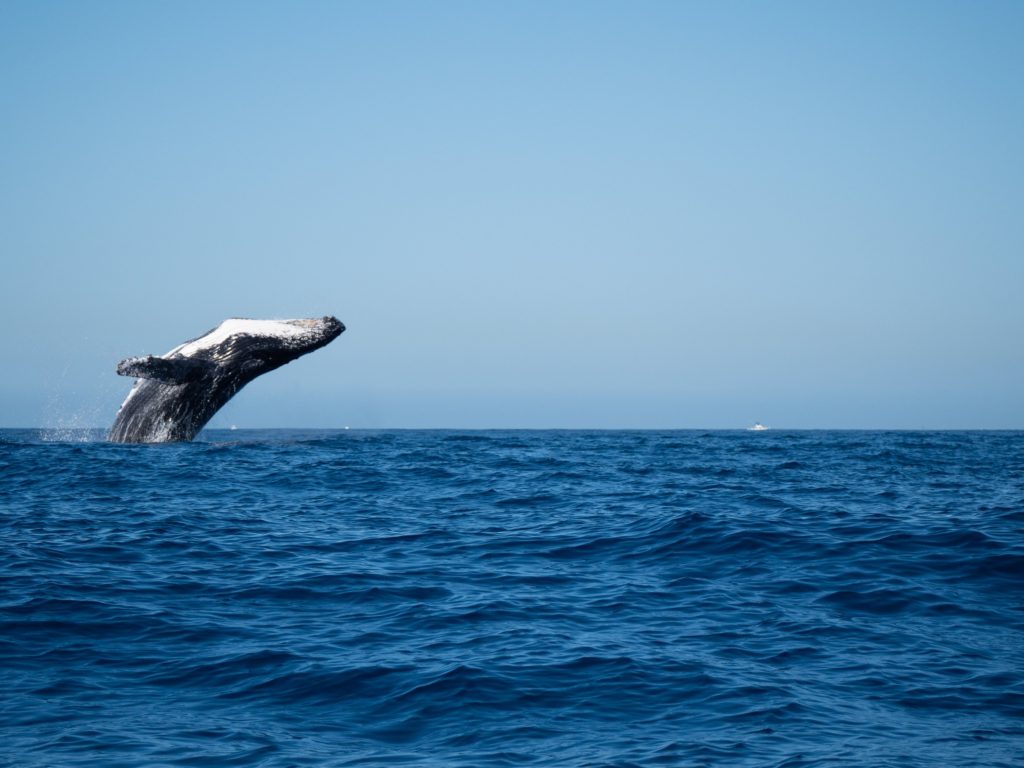
Seeing animals in the wild can be one of the best parts of travel. Witnessing animals behave in ways we’ve only seen on TV is definitely one of our favourite parts of travelling and we often actively seek out wildlife encounters. But it wasn’t until we started participating in wildlife tourism that we started to consider the negative impacts that witnessing and interacting with wildlife can have. Wildlife tourism accounts for between 20-40% of global tourism and unfortunately not all of these encounters have positive effects for the animals involved. In fact, right now more than 500,000 wild animals worldwide, including elephants, sloths, tigers and dolphins, are suffering for tourist entertainment. And most tourists involved don’t even know they’re a part of questionable wildlife encounters.
So what can we do about it? It’s easy to get excited over the prospect of seeing an animal you’ve never seen before and forget to question your impact on it in that moment. We want to open up a discussion about ethical wildlife tourism in the hopes we can identify how to choose ethical wildlife experiences and encourage more people to consider the impact their next wildlife encounter will have.
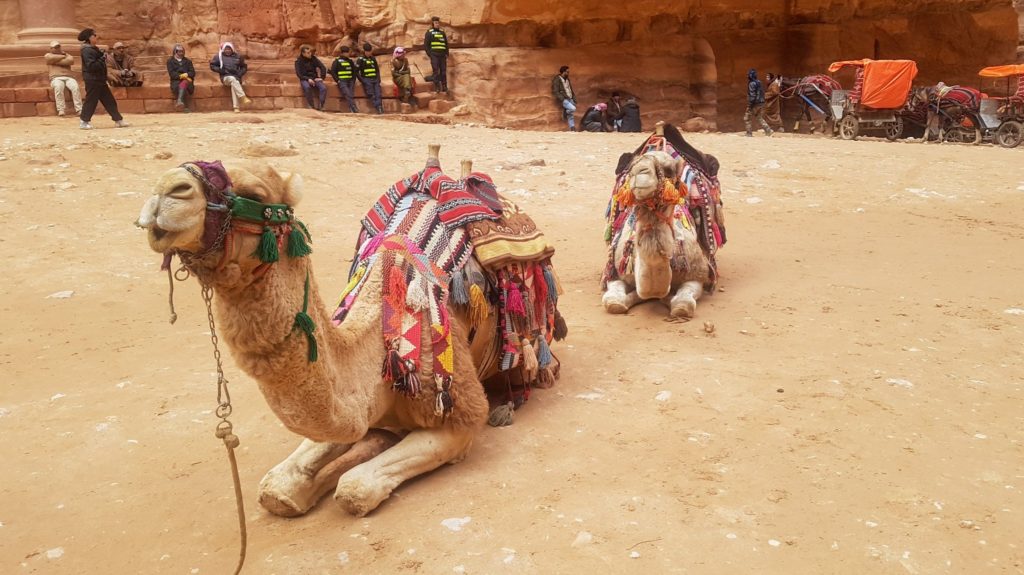
What is ethical wildlife tourism?
Put simply, wildlife tourism is any activity that involves an animal, from riding a camel in Jordan to going on a whale watching boat tour in Mexico or observing wild turtles in Hawaii. The term wildlife tourism supposedly only refers to experiences with animals in their natural habitats, but it’s used interchangeably to describe experiences in captivity too. Depending on the scenario or tour operator, these activities can involve more or less interaction with the animal, ranging from observation to touching, feeding and holding.
The way we see it:
If the wildlife experience is detrimental to the animal it is unethical.
If the wildlife experience has no effect or a positive effect on the animal it is ethical.
That might not have made it much clearer for you, so we’ll elaborate.
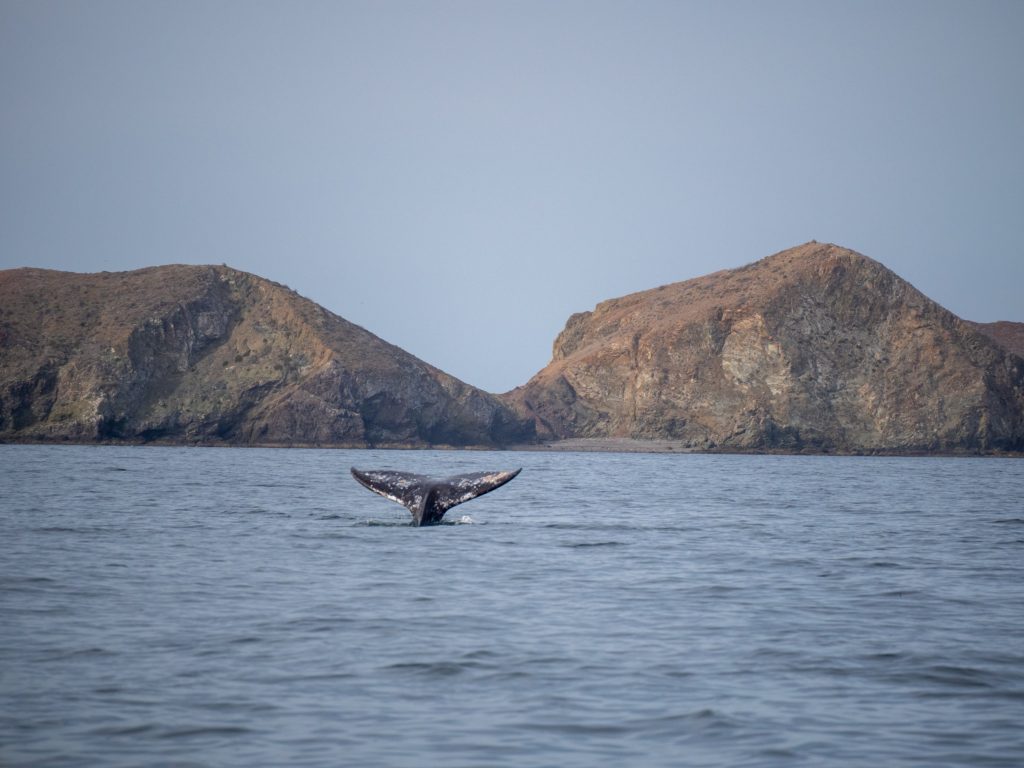
The main issues with wildlife tourism
One of the main issues with wildlife tourism is that the animals’ best interests aren’t at the heart of the company operating the experience. Many tour operators care more about tourists’ money than the welfare of the animal and therefore don’t treat the animal with the respect it needs during the activity. Examples of this can range from getting too close to a wild animal, approaching it too quickly or chasing and harassing it by blocking its exit. The negative impacts of this are two-fold: 1) the animal is put in a position of stress in a time it might need to be resting, feeding or migrating and 2) your experience with the animal will be worse as it tries to escape your presence or shows signs of stress rather than its natural behaviours. This can of course be avoided by booking with a certified company who prioritises responsible wildlife experiences.
While in captivity, many places don’t offer animals the sufficient space and resources they need to live naturally. Often, animals have been taken from their natural habitat and are treated incredibly poorly. Animal cruelty and abuse is widespread in the wildlife tourism industry and many countries have poor laws and regulations in place to protect animals.
Unethical wildlife tour operators will at best scare away or stress the animal and at worst cause psychological and physical trauma. This level of suffering is unfortunately rife throughout the wildlife tourism industry. The image below depicts The Five Freedoms, a set of globally-recognised standards for animal welfare. It’s a sad fact that a lot of wildlife encounters around the world don’t meet these basic criteria.

Why is it important to only choose ethical wildlife experiences?
Firstly, it’s better for the animals. By booking a wildlife encounter with a certified company who cares for the wellbeing of the animals you can be sure you will observe and not disturb. It also means there is less demand for the dodgier companies, who will then operate less or (hopefully) cease operating altogether – leaving wildlife to flourish in its natural habitat.
Secondly, it’s better for you. Without unethical companies hounding and scaring away wildlife there will be more animals present for you to observe. They will also be less stressed and display natural behaviours more openly – think spinner dolphins leaping and jumping, whales breaching, cheetahs hunting, baby elephants coming out to play! Your experience will be categorically better and you’ll witness more magical moments.
Thirdly, it’s better for the planet. With animals being allowed the space they need to rest, feed and mate we can reverse the decline in endangered species, help protect animals from extinction and create a sustainable wildlife tourism industry.
Read next: Ethical Wildlife Tourism in Hawaii
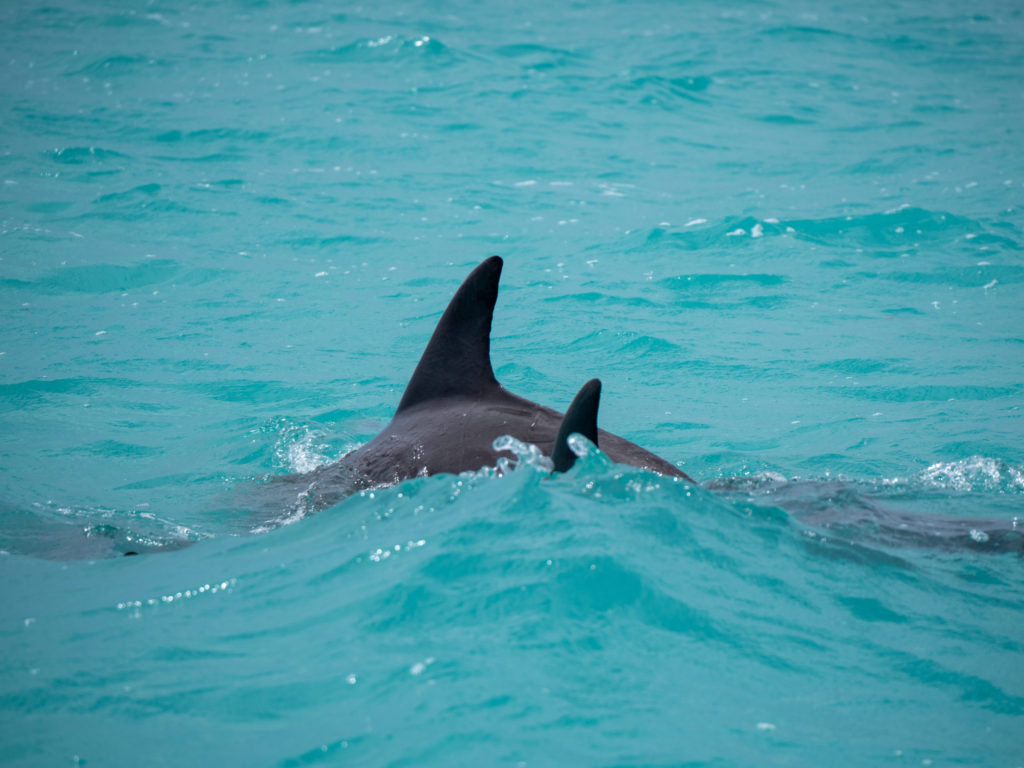
Responsible wildlife tourism is not a case of can you – can you pet a tiger, can you ride an elephant, can you swim with dolphins – it’s a case of should you. You can swim with dolphins in captivity in locations globally but should you? In the wild, dolphins can travel up to 80 miles in a day at speeds of almost 20 miles per hour. Being trapped in a tank that is smaller than the attraction’s car park causes stress, trauma and neurotic behaviours, such as swimming in endless circles. You can watch whales and dolphins perform in shows in Sea World, but should you? When the experience is detrimental to the animal in question’s health and wellbeing, we’re going to go with a strong no.
When we travel we have the power to choose where to spend our money. Skipping an experience in the place you’re travelling and waiting until you can undertake the activity ethically in another part of the world means that there is less demand for unethical wildlife experiences. With less demand there can only be less unethical tour operators and less animals put in positions of stress and harm. Choosing ethical wildlife experiences is the biggest difference tourists can make to the wildlife tourism industry.
Read next: Everything you need to know about (ethically) snorkelling with Sea Lions in La Paz
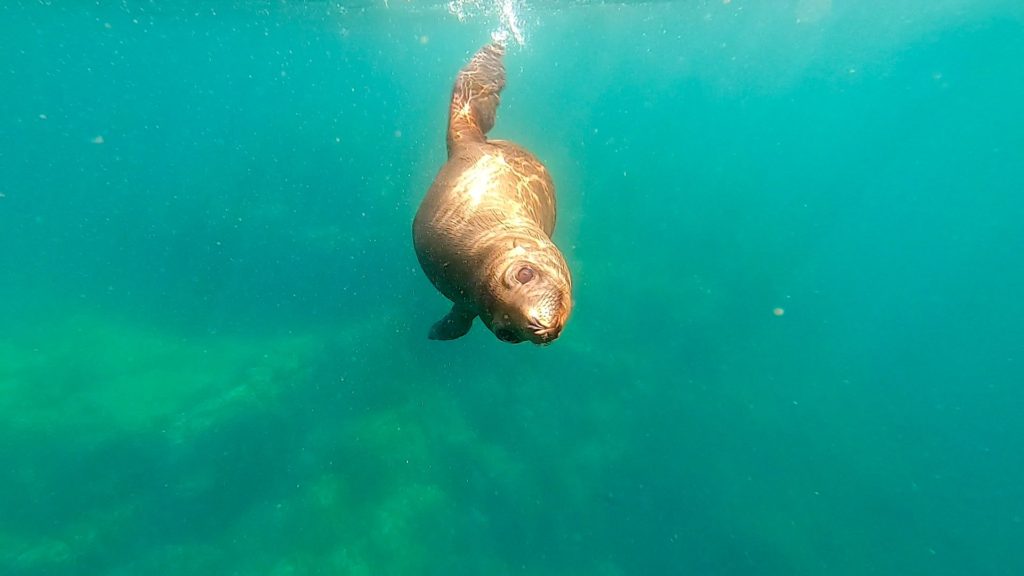
What to look out for when booking your wildlife encounter
There are certain activities that we can confidently say should be avoided in all circumstances. These include elephant rides, tiger petting, monkey performances and captive whale and dolphin shows. These animals have been taken from their natural habitat, incentivised to perform for human entertainment and are often kept in cramped conditions and treated poorly. Always be wary of animals held in captivity – unless it is for rescue, rehabilitation and release purposes or the animal was born in captivity and can’t be released back into the wild – it is likely the experience is an unethical one.
Other activities are murkier. For example, can you swim with dolphins in the wild? Well, in some circumstances yes! There are certain locations in the world where you can swim with wild dolphins without causing them any harm. You can read about our experience swimming with wild dolphins on Kangaroo Island here. The company, Kangaroo Island Marine Adventures, use a propeller-free boat as propellers can be extremely harmful to marine life. And more than this, the boat creates a sympathetic acoustic pattern (vibrations) that the dolphins love. They also really care for the conservation and wellbeing of the dolphins and are the only KI marine tourism business with an Advanced Eco Certification. But in other circumstances, no it’s really not a good idea to swim with dolphins in the wild. For example, spinner dolphins need to rest during the day to ensure they have the energy to avoid predators and fish at night. Swimming with them can disturb them during this period of rest, meaning they aren’t able to feed themselves properly. Human interaction with spinner dolphins is one of the leading causes of their decline in several parts of the world. So you should never swim with spinner dolphins in the wild.
Find out where you can see Hawaii’s spinner dolphins without disturbing them in our article Ethical Wildlife Tourism in Hawaii
Looking for companies with legitimate certifications and who have undergone third-party inspections is always a good place to start. Some common certifications that demonstrate a commitment to animal welfare include:
- Blue Flag certification – awarded to sustainable marine tourism operators
- Fair Trade Tourism certification – awarded to those who follow best practices of responsible tourism
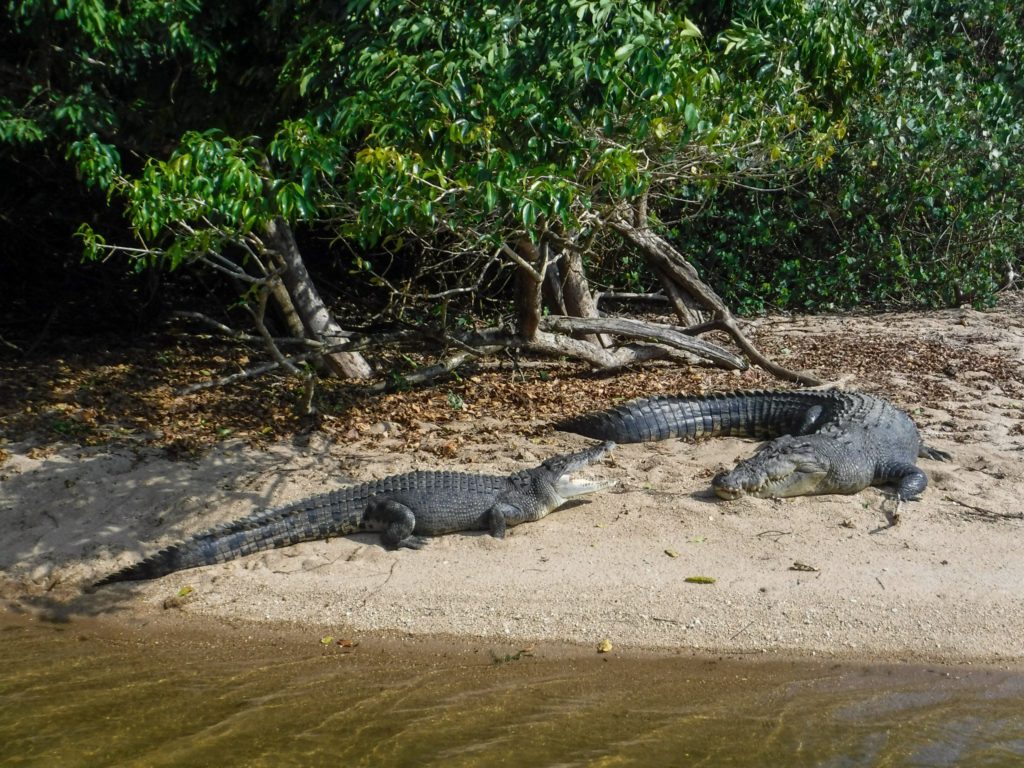
How to spot unethical wildlife experiences and key things to look out for when booking:
The animals are incentivised
Often animals are fed by humans to attract them to an area or in exchange for interaction. A good example of this is the whale sharks in the Philippines. Home to the second-largest known whale shark population in the world, the Philippines proudly boasts over 1,950 whale sharks. Tourists flock to Oslob, which lies in the south of the Cebu province, in droves for the chance to swim with the largest fish in the ocean. But unfortunately swimming with whale sharks here is highly unregulated which can be dangerous for both whale sharks and tourists alike. There is no protection in place so the whale sharks have no break from human presence and they are often touched and bumped into, leading to stress and trauma. The local fishermen also feed the whale sharks in a bid to bring more tourists to the area and make money off their encounters. But feeding animals can lead them away from their natural feeding grounds, disrupt the food chain and cause long term damage to the species as key hunting and fishing skills are no longer passed down through the generations. Becoming reliant on humans as a source of food can lead to animals no longer being afraid of humans, making them easier prey for poachers and hunters who will harm them. It also means, if the source of food ever stops, they might struggle to feed themselves naturally, having lost the key skills they need to survive.
If you are interested in swimming with whale sharks there are many places in the world where you can do so ethically. You can read about our experience swimming with whale sharks in La Paz, Mexico (coming soon!), where boats are highly regulated and you can be certain that you have no negative impact on the whale sharks. Other locations which sport well-regulated zones for swimming with whale sharks include Western Australia, Tanzania and Mozambique.
Read next: Everything you need to know about (ethically) swimming with Whale Sharks in La Paz
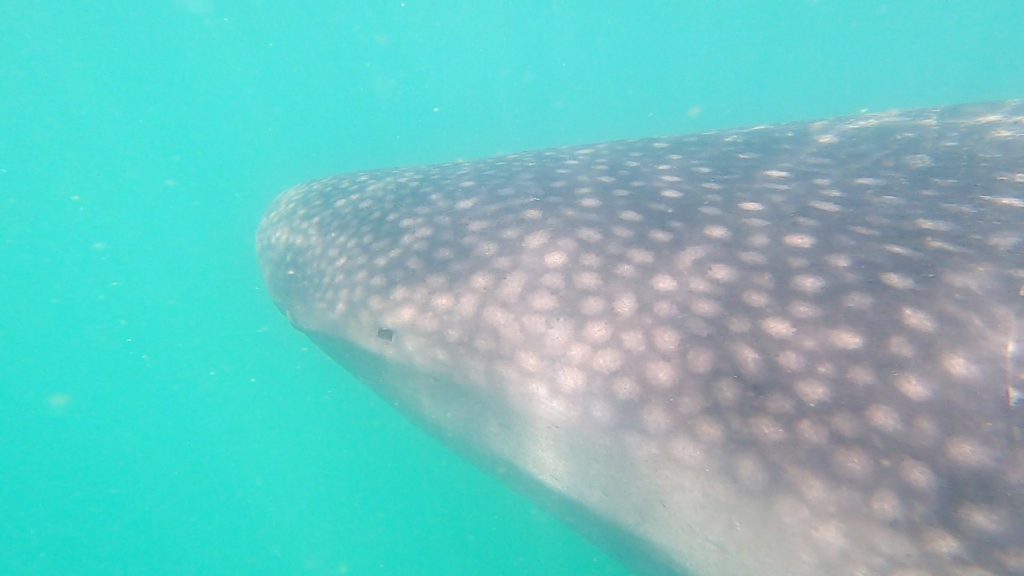
The animals are exploited
Probably the most famous example of animal exploitation is elephant rides in Thailand. Once seen as a must-do activity in Thailand, recent years have exposed the damage carrying humans can cause elephants – they can bear intense pain and spinal damage – as well as the abuse elephants undergo during ‘training’ and the horrific living conditions they are kept in. A study of 3,000 elephants in the wildlife tourism industry by World Animal Protection (WAP) found that 75% lived in ‘severely cruel’ conditions. The remaining 25% were still likely taken from their mothers as babies, forced to endure harsh training and then suffered poor living conditions throughout their lives. Essentially, it is absolutely never ok to ride an elephant – ever.
This sparks one of the questions you should ask each time you contemplate a wildlife encounter: how did the animal get here? If this is not its natural environment, or it is held in captivity, was it taken from its mum? Was it taken from its home? How is it then treated by the people who took it? And why did they take it?
Regarding elephants, there are two ethical ways to experience them for yourself: in the wild or in a sanctuary. If you are considering visiting Thailand, be sure to visit Phuket Elephant Sanctuary. This sanctuary IS actually a sanctuary, not just by name but also by nature. It provides a final home for retired elephants that have been victims of cruelty within the animal tourism industry and focuses on education and conservation. Or take a visit to Africa, where you can join a certified company on a safari to witness elephants behaving naturally in the wild.
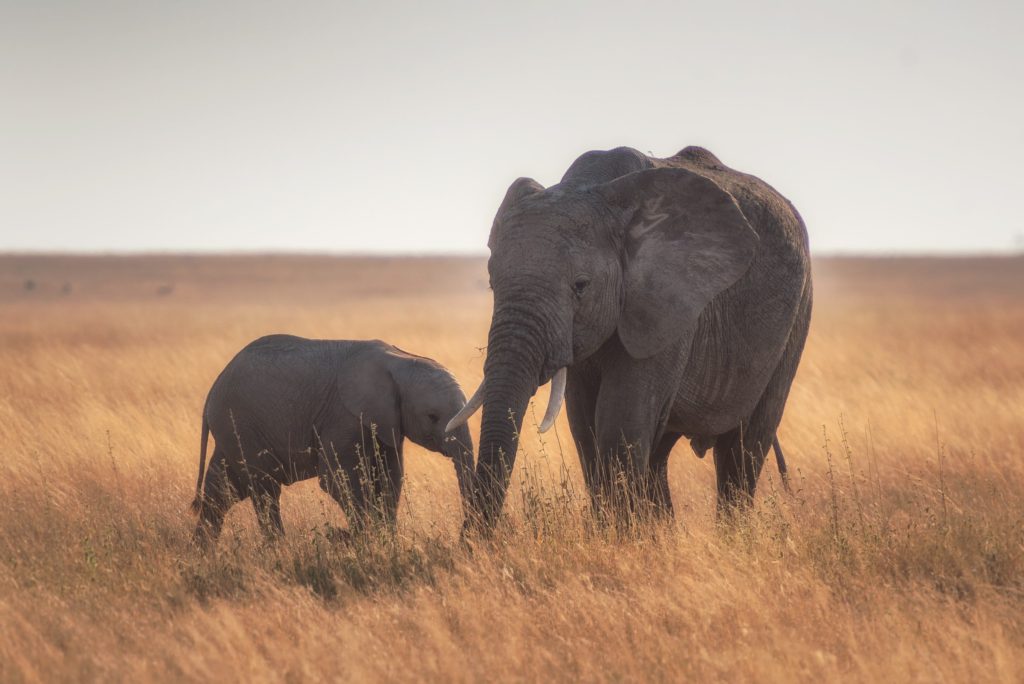
The animals are not respected
Animals, particularly large animals, need space. They can be unpredictable, change direction or speed at a moments notice and need space to be able to get away from you if they wish. For example, in some parts of the world there are much tighter restrictions for whale watching than in others. We recently spent 3 weeks whale watching around the shores of Baja California Sur, Mexico. We saw grey whales in Magdalena Bay, blue and fin whales in Loreto and humpback whales in Cabo San Lucas. And each time we came across the same experience – we would witness a boat from another company speeding towards the whale we had spotted, cutting the engine too late and getting too close. And each time the whale, rather than stick around, would dive and swim away. Each boat trip we took was well-researched and always with a company who prioritised the wellbeing of the whales and adhered to the local whale watching guidance. And when we were away from other boats we saw whales breaching, spy hopping, tail slapping and feeding – all signs that they were completely unbothered by our presence. Our boat always kept a distance and approached slowly from the regulated angle. We were able to witness far more natural behaviours and have more time with the whales than boats who just cared about making money off some tourists.
Read next: Should You Touch a Grey Whale in Baja California Sur, Mexico?

You can touch or hold the animal
This is another big red flag within wildlife tourism. Animals being touched or held by humans is highly unnatural for most species so you have to ask how the animal came to be ok with the interaction. In the case of tiger petting, the tigers are drugged so are docile enough to act as props for tourists’ selfies. I’m sure we’ve all seen Netflix’s Tiger King and were shocked by the lack of rules and regulations in place to protect tigers in the USA.
There are exceptions to this, but you need to research them on a case-by-case basis. For example, the grey whales at Magdalena Bay have come to trust the local fishermen over decades and will often introduce their babies to them, rubbing up against the boats and enjoying rubs from tourists. Despite being friendly and enjoying human touch, the chances of touching a grey whale at Magdalena Bay are still only 30%. We also witnessed a few boats not following the guidance on distance and speed, therefore scaring away the whales. They were jostling too close to uninterested whales just so tourists could touch them. So if you’re interested in going, be sure to book with a licensed company who has the whales best interests at heart, rather than a company who markets the experience as the sole goal is to pet a whale. We’d highly recommend Magdalena Bay Whales, who are a local company with over 40 years experience with the whales. They were nothing but respectful of the whales and kept their distance where other boats didn’t.
Read next: The Truth about Swimming with Turtles in Akumal (Tulum), Mexico
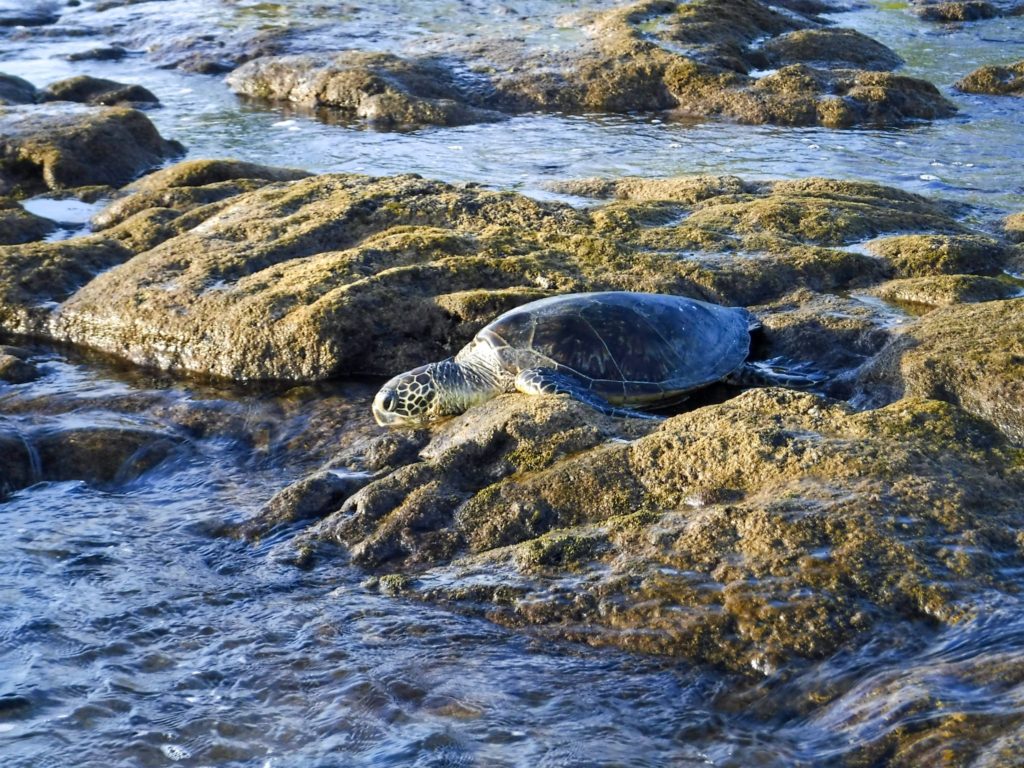
Our top tips for booking ethical wildlife encounters
- Always consider your impact – if there seems to be a chance your impact could be harmful then it probably will be.
- Look for international certifications, such as the Blue Flag certification and Fair Trade Tourism certification, as well as local certifications that show the company has undergone third-party inspections.
- Think: how did this animal get here? – If the animal is owned by a human or held in captivity, was it taken from the wild? Has it been domesticated or ‘trained’? If so then it’s probably not being looked after by somebody who really cares for its wellbeing.
- Do your research – understand what is natural for the animal you’re going to see so you can assess whether the activity you’ll experience is normal behaviour for it.
- Use legitimate (and local where possible) tour companies – search Google and TripAdvisor reviews to see if other customers have remarked on how the company respected the animal or if they got too close. Also read the bad reviews and see what people complain about – is it the treatment of the animal during that activity?
- Although this is not always true, if the company has a good website and social media presence, alongside good reviews and a strong reputation, it’s probably a good company to choose. Ethical companies will usually have a page on their website or blog section expressing their values and any initiatives they’re a part of in relation to conservation efforts, which will give a clearer picture of their values.
- Be sceptical of salespeople selling tours on the street. Sometimes they are legit, but more often than not these people are locals who just want to make some money off tourists. If the price is better than the going rate in that location, ask yourself why – is it because they don’t really care for the wellbeing of the animal involved?
- Research the laws of the country or area you’re going to – if the government has quite strict laws in place to protect the animal in question you can be more certain the animals will be looked after by the companies that operate there.
- Don’t feed or touch wild animals, obviously. Wild animals can bite and often have specific nutritional needs. Human food can be damaging to them and an unnatural food source long term can be harmful to a species’ ability to feed itself.
- Buy a zoom lens for your camera. This can allow you to get cool close up shots of animals, without the need to get physically near them and disrupt them.
Read next: The Best Wildlife Photography Camera Settings
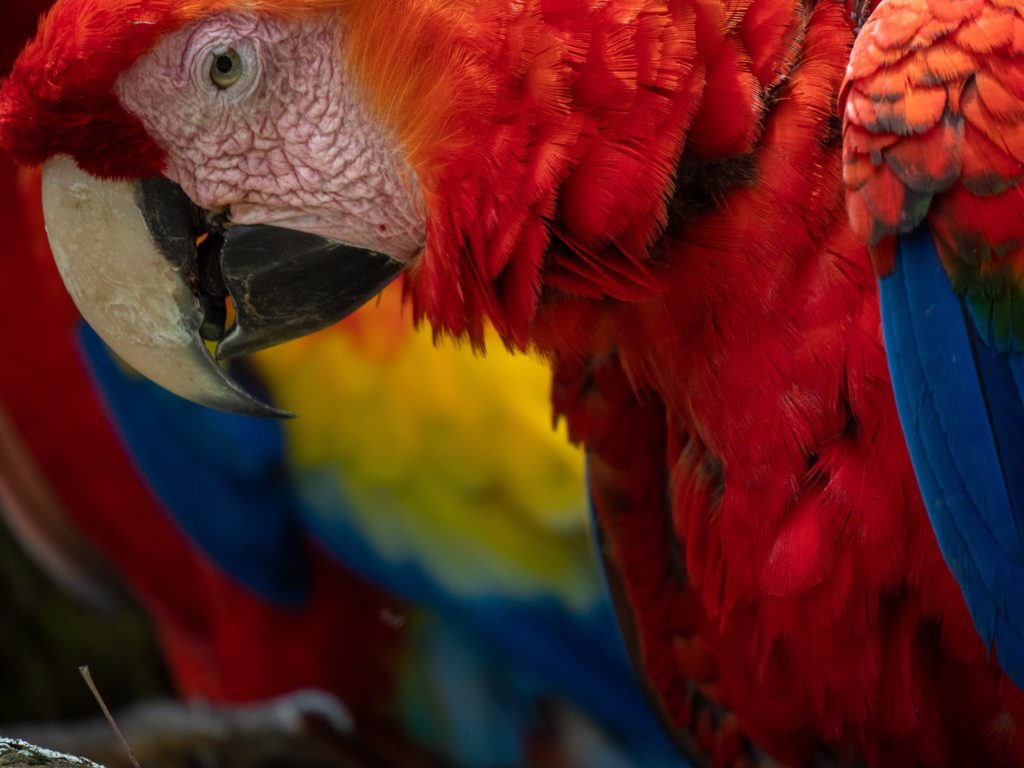
To simplify this whole article, make sure your next wildlife experience involves at least one of the following three things:
- animal rescue, rehabilitation, care and release
- observing not disturbing animals in the wild
- conservation, research and protection
And if you still want to have closer wildlife encounters, or simply learn more about a species, consider volunteering. Make sure to do your research and choose a legitimate volunteer programme that has the animals’ best interests at heart. We’d highly recommend Projects Abroad, who are a leading provider of international volunteering, internships and meaningful travel experiences.
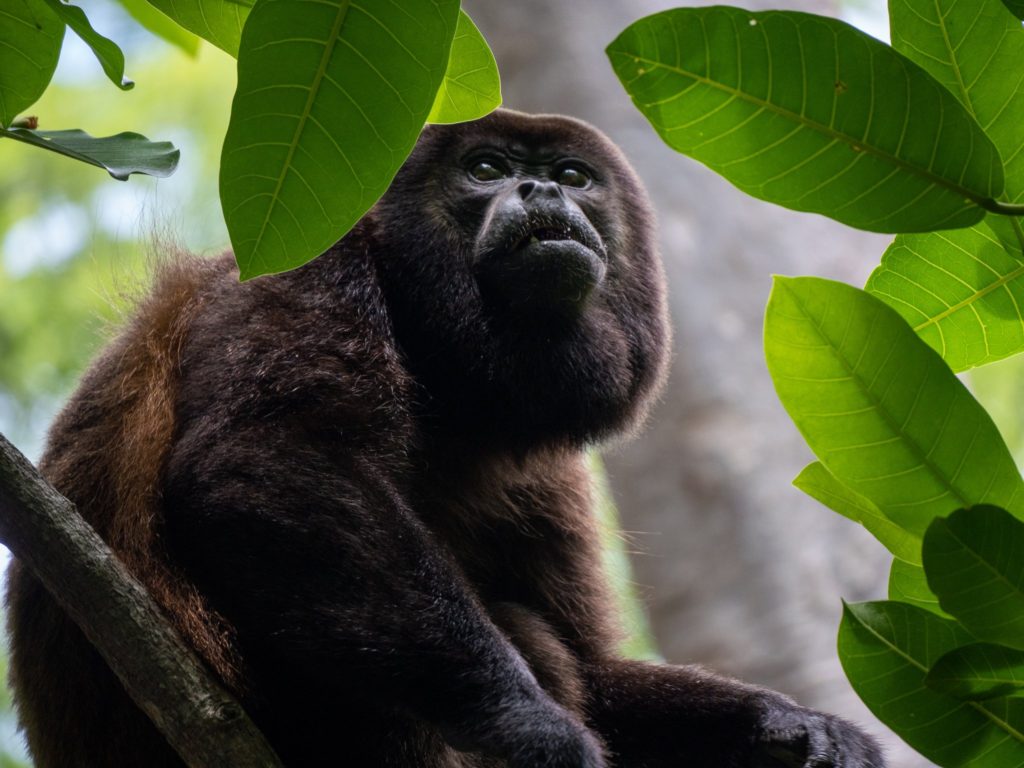
Useful resources
National Geographic – Suffering unseen: The dark truth behind wildlife tourism
Read next: Everything you need to know about Blue Whale Watching in Loreto, Mexico
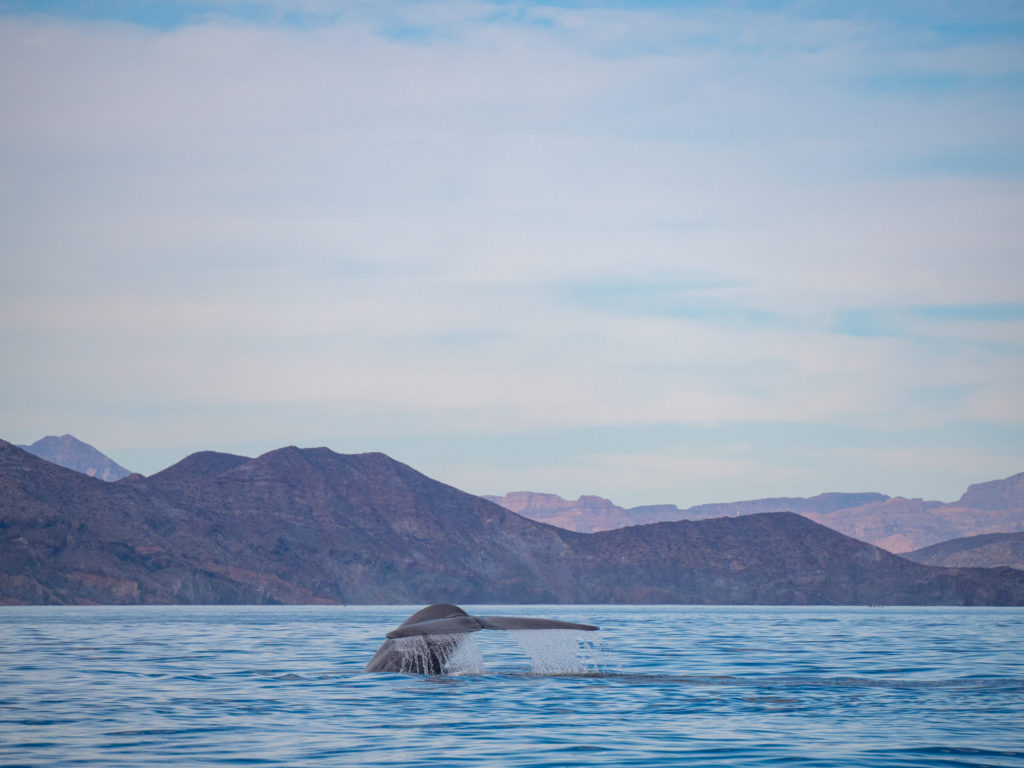
Read next:
Ethical Wildlife Tourism in Hawaii
Swimming with Wild Dolphins (ethically) on Australia’s Kangaroo Island
Should You Touch a Grey Whale in Baja California Sur, Mexico?
Everything you need to know about (ethically) snorkelling with Sea Lions in La Paz, Mexico
Everything you need to know about (ethically) swimming with Whale Sharks in La Paz, Mexico
The Truth about Swimming with Turtles in Akumal (Tulum), Mexico
The Best Wildlife Photography Camera Settings
Let’s Talk About The Plastic Problem
Check us out on social media!
